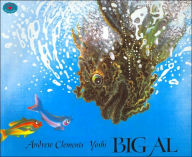When Christopher Columbus landed on the island of San Salvador in 1492, what he discovered were the Taino Indians. Told from a young Taino boy’s point of view, this is a story of how the boy tried to warn his people against welcoming the strangers, who seemed more interested in golden ornaments than friendship. Years later the boy, now an old man, looks back at the destruction of his people and their culture by the colonizers.
Publishers Weekly - Publisher's Weekly
PW's starred review described this "stirring" book as a look at the dark underside of Christopher Columbus's adventure. "The message is blunt but the language in which it is couched is vintage Yolen, lyrical and impassioned. Shannon's visionary style is an ideal complement." Also available in a Spanish-language edition, Encuentro ($6, -201342-3). Ages 6-12. (Sept.)
Children's Literature - Susie Wilde
This children's picture book tells about the encounter of the Taino people with Columbus. The story is told from the point of view of a small Taino boy frightened by three dream birds who come to him in sleep. When he wakes, he finds three "great canoes" anchored off the shores of his island and tries to warn his chief. He is ignored and the the strangers are welcomed, much to everyone's eventual sorrow. Yolen may believe that she envisioned life through the eyes of a Taino boy, but the feelings she attributes to him run counter to Taino society. To explain why the boy is ignored, she repeats five or six times, "I was but a child." This makes the story gain power, but it is based on a European, not an Indian model of society. Indian society is built on mutual respect . Yolen's word choices are another slap in the face. She talks of how the Indians "gave" their souls, or "took" European words, as if the victims were to blame. Encounter may have been well-intentioned, but I wonder why it wasn't reviewed before publication by an organization familiar with the culture, such as OYATE. The book is an overly-sentimental, off-kilter story and one more betrayal to Native people. Its half-truths make it more insidious than books that have obvious misrepresentations.
Children's Literature - Jan Lieberman
Ms. Yolen has written a fictional story, in picture book format, about the arrival of the Spaniards as observed by a young Taino boy. He is frightened and tries to share his fears with the elders but no one listens. This story is both lyrical and powerful in text and paintings.
School Library Journal
Gr 2 - 5-- Readers weary of materials celebrating Columbus and his voyages will be refreshed and intrigued by this thought-provoking picture book. The imaginative story examines the first meeting between Columbus and the indigenous peoples of San Salvador (the Taino) through the eyes of a young native boy. The unnamed narrator has been warned in an ominous dream that the strangers may bring trouble to his people. His concerns are ignored, however, and the Taino greet their guests with customary feasting and gifts, only to be repaid by the abduction of several of their young people. Taken among the captives, the boy escapes and slowly makes his way home, trying to convince others along the way that the Spanish pose a threat, but to no avail. Yolen acknowledges in an author's note that no record of the Tainos' reaction to Columbus's arrival is available; this account is instead an evocative imagining of how things might have been. The haunting story is perfectly complemented by Shannon's powerful acrylic paintings. He mentions that, in fact, the Taino did not wear clothing, but feels that his decision to clothe them does not interfere with the plausibility or effectiveness of his presentation. A book that offers readers an alternative perspective on a well-known and much-celebrated historical event. --Lisa Dennis, The Carnegie Library of Pittsburgh
Read More



















